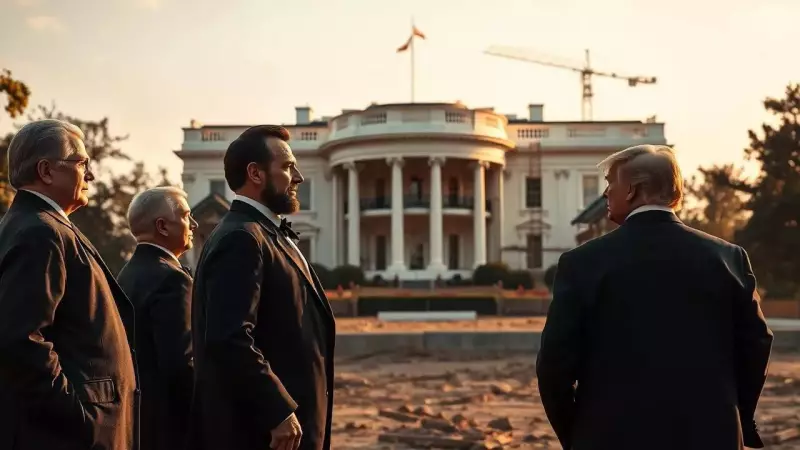
The White House, America's iconic presidential residence, has undergone numerous dramatic transformations throughout its history, each reflecting the personalities and needs of its occupants. From recreational additions to essential structural overhauls, these renovations tell a fascinating story of American leadership and architectural evolution.
The Presidential Residence Through the Ages
Since its initial construction, the White House has served as both home and workplace for America's commanders-in-chief, requiring constant updates and modifications to meet changing demands. Here are 10 of the most significant renovations that have shaped the building's current form:
1. The Truman Reconstruction (1948-1952)
Perhaps the most extensive renovation in White House history, President Truman's reconstruction addressed serious structural issues that threatened the building's stability. The entire interior was gutted and rebuilt while preserving the historic exterior facade, essentially creating a new home within the original shell.
2. Jacqueline Kennedy's Restoration (1961-1963)
First Lady Jacqueline Kennedy brought historical authenticity and elegance to the White House through her famous restoration project. She established the White House Historical Association and worked with experts to return rooms to their original historical appearances, while also acquiring significant period furnishings.
3. Nixon's Bowling Alley (1969)
President Richard Nixon, an avid bowler, had a one-lane bowling alley installed in the White House basement. This recreational addition reflected Nixon's personal interests and demonstrated how presidents could customize their living spaces to suit their hobbies.
4. The Situation Room Modernization (2006-2007)
Following technological advancements and lessons from 9/11, the George W. Bush administration completely overhauled the White House Situation Room. The renovation created a state-of-the-art command center with advanced communications and security systems for handling national emergencies.
5. Trump's Ballroom Transformation (2020)
President Donald Trump authorized the conversion of a space into an elegant ballroom, continuing the tradition of presidents leaving their architectural mark on the White House. This addition provided enhanced entertainment capabilities for official functions and state dinners.
6. Solar Panel Installations
Multiple administrations have embraced energy efficiency through solar technology. President Jimmy Carter first installed solar panels in 1979, which were later removed by Ronald Reagan, then reinstalled and expanded by subsequent presidents including Barack Obama.
7. West Wing Expansion and Modifications
The presidential workspace has undergone numerous changes, from Theodore Roosevelt's initial construction of the West Wing to Franklin D. Roosevelt's expansion that included the Oval Office in its current location. These modifications have continuously adapted the working environment to presidential needs.
8. Green Room Historical Restoration
Multiple first ladies have undertaken restoration of the historic Green Room, with notable work by Jacqueline Kennedy, Pat Nixon, and Hillary Clinton. Each brought different historical perspectives to interpreting and preserving this important reception room.
9. Family Theater Addition
During Franklin D. Roosevelt's administration, a long cloakroom was converted into a family theater, providing entertainment space for presidential families and their guests. This conversion demonstrated the building's adaptability to both official and personal needs.
10. Security and Technology Upgrades
Continuous security enhancements have been essential throughout White House history, from the installation of modern surveillance systems to bulletproof windows and advanced communications infrastructure. These necessary updates reflect evolving security requirements for protecting the president.
A Living Monument to American History
Each renovation tells a story about its era and the presidents who commissioned it. From essential structural repairs to personal touches that reflect individual interests, these changes demonstrate how the White House evolves while maintaining its historical significance. The building continues to serve as both a national symbol and a functional home, requiring careful balance between preservation and modernization.
The ongoing transformation of America's most famous address ensures it remains capable of meeting the demands of modern presidency while honoring its rich historical legacy. As future administrations take residence, new chapters will undoubtedly be added to this fascinating architectural story.





